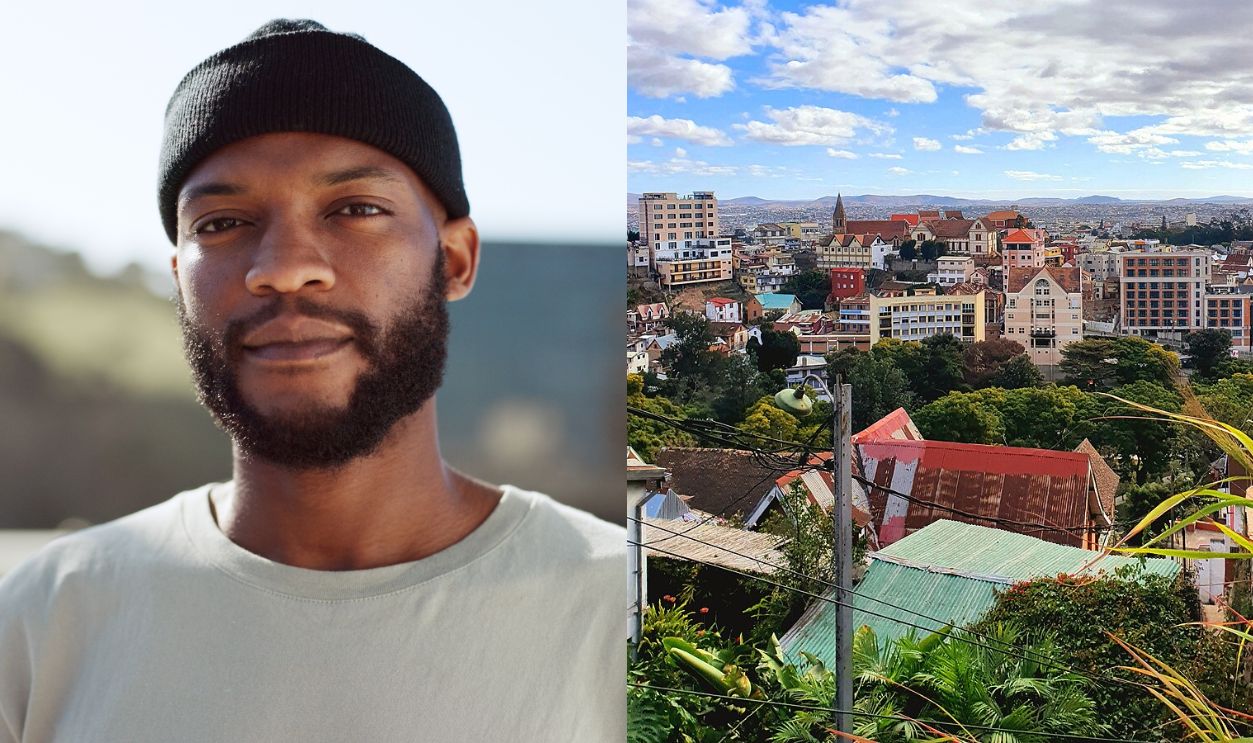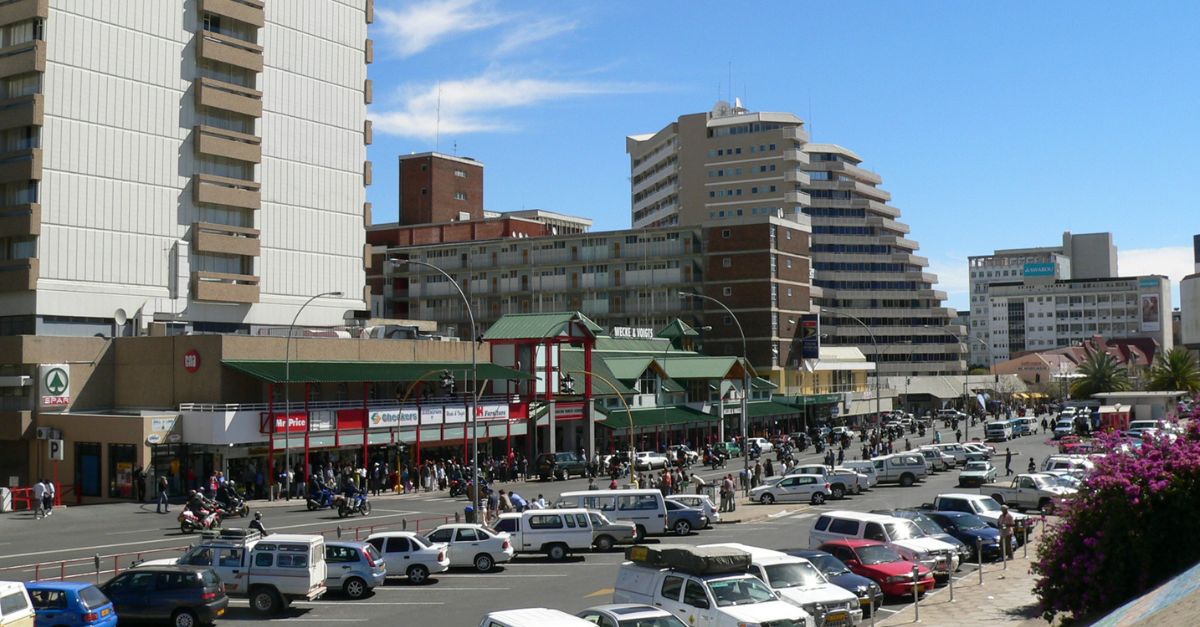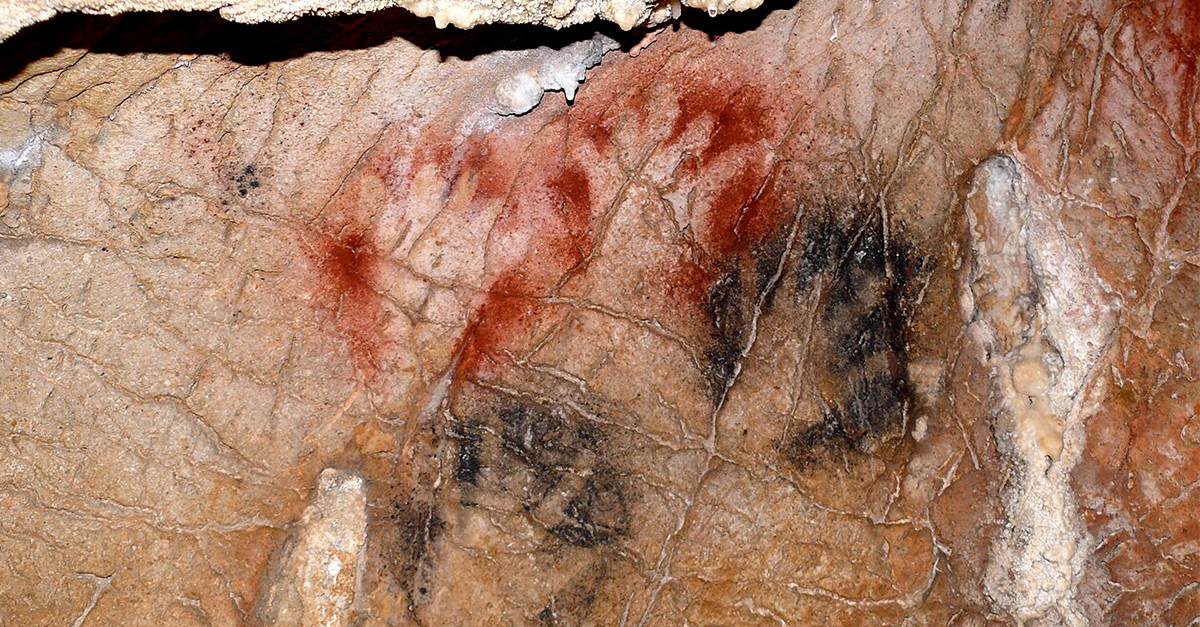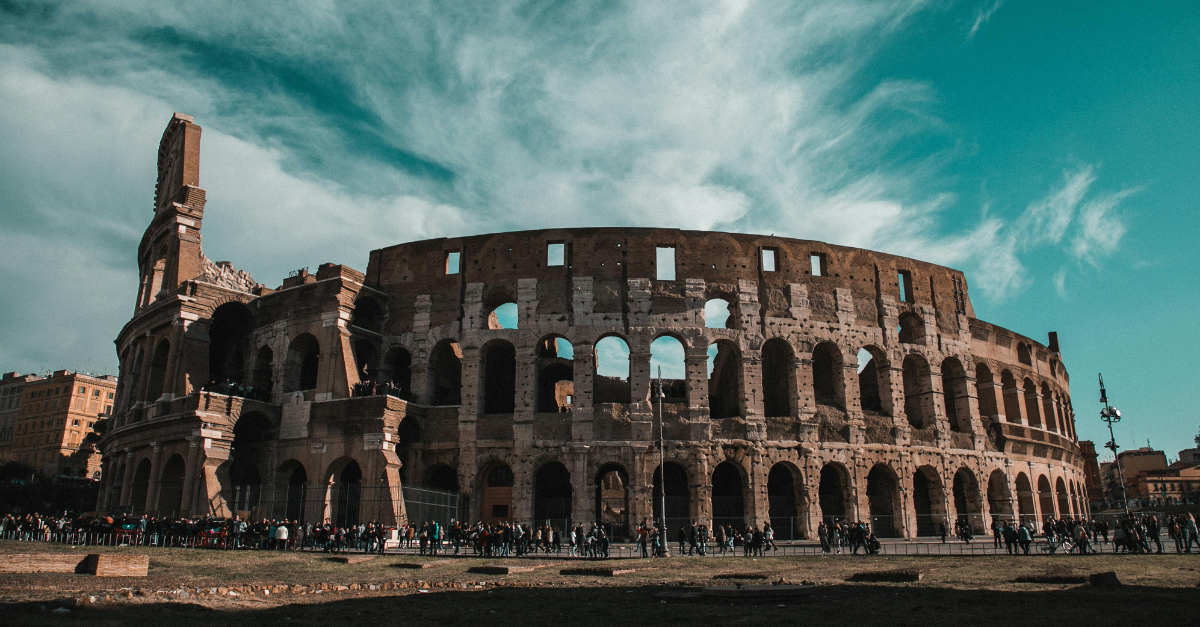The Other Side Of Global Prosperity
Global wealth is hitting record levels for sure. However, there are some countries that are constantly at the bottom and still facing economic difficulties. Based on their low per capita income, here are some really poor regions that you may not even know about.

South Sudan, East Africa
This country struggles economically, with a per capita income of only $410. Since gaining independence in 2011, ongoing civil conflict has made it hard to develop. Even though there are plenty of oil reserves, around 3.5 billion barrels, most people there rely on humanitarian aid
 Rigan123, CC BY-SA 4.0, Wikimedia Commons
Rigan123, CC BY-SA 4.0, Wikimedia Commons
South Sudan, East Africa (Cont.)
There aren’t enough basic services either, like healthcare and education. The country’s infrastructure is weak, with unpaved roads and little access to electricity. The newborn mortality rate is around 40 deaths per 1,000 live births in this area.
 Mr leroy playpus, CC BY 4.0, Wikimedia Commons
Mr leroy playpus, CC BY 4.0, Wikimedia Commons
Burundi, East Africa
Apparently, in Burundi, around 11% of people have electricity access. Even though recent diplomatic progress has led to renewed international aid, widespread poverty still persists. The World Happiness Report 2023 said they were some of the most unhappy people in the world.
 Edouard mhg, CC0, Wikimedia Commons
Edouard mhg, CC0, Wikimedia Commons
Burundi, East Africa (Cont.)
After all, as a landlocked country, it has about 13 million people and is dealing with a low income of $240 per person. Most folks depend on small-scale farming to get by, and they’re also facing a tough situation with inflation hitting 22%.
 Edouard mhg, CC BY-SA 4.0, Wikimedia Commons
Edouard mhg, CC BY-SA 4.0, Wikimedia Commons
Central African Republic, Central Africa
Initially known as Ubangi-Shari, this place has a ton of mineral resources but struggles to turn all of that into real wealth. The average income is only $480, and armed groups have taken over a lot of land, which causes activities to slow down.
 Afrika Force, CC BY 2.0, Wikimedia Commons
Afrika Force, CC BY 2.0, Wikimedia Commons
Central African Republic, Central Africa (Cont.)
Illegal logging and the lack of regulation pose risks to the timber industry. With President Touadéra at the helm, there’s been some stability, but many people still miss out on basic services. On the upside, diamond exports have started up again, which gives some hope for the economy.
 DFID - UK Department for International Development, Flickr
DFID - UK Department for International Development, Flickr
DR Congo, Central Africa
DR Congo owns a low per capita income of $610, which doesn’t match up with all the mineral wealth it has. It’s the biggest producer of cobalt in the world and a major source of copper in Africa. Sadly, violence against kids and women linked to witchcraft accusations is one present issue.
 Edward MHG, CC BY-SA 4.0, Wikimedia Commons
Edward MHG, CC BY-SA 4.0, Wikimedia Commons
DR Congo, Central Africa (Cont.)
Around 65% of the country’s 100 million people live on less than $2.15 a day. While much of the country can grow its own food, raising livestock is tough because of the tsetse fly problem. Food crops such as maize, millet, cassava, peanuts, etc., are grown and sold here.
 EdwinAlden.1995, CC BY-SA 4.0, Wikimedia Commons
EdwinAlden.1995, CC BY-SA 4.0, Wikimedia Commons
Mozambique, Southeast Africa
The region broke free from Portuguese rule after more than 400 years and became independent in 1975. This country has a per capita income of $440. Since 2014/15, people’s real household spending has dropped, causing a big jump in economic inequality.
 Jcornelius, CC BY-SA 4.0, Wikimedia Commons
Jcornelius, CC BY-SA 4.0, Wikimedia Commons
Mozambique, Southeast Africa (Cont.)
However, in 2019, the Mozambique LNG Project made some big waves by collecting $19 billion from a group of investors to finally get their LNG out into the market. As of 2024, it has faced issues due to the ongoing Islamic insurgency in Cabo Delgado.
Niger, West Africa
This African country is dealing with some tough challenges, having a per capita income of just $580. The Sahara Desert takes up 80% of this country, which is landlocked. Recently, in 2023, there was a big political shake-up when President Bazoum got kicked out by a military coup.
 NigerTZai, CC BY-SA 4.0, Wikimedia Commons
NigerTZai, CC BY-SA 4.0, Wikimedia Commons
Niger, West Africa (Cont.)
Even though there was a solid 12% growth in 2022, things are still looking shaky. Boko Haram attacks have forced thousands to flee. Reported desertification, a 2.9% population growth, and a decline in global demand for uranium have caused harm to the economy.
 NigerTZai, CC BY-SA 4.0, Wikimedia Commons
NigerTZai, CC BY-SA 4.0, Wikimedia Commons
Malawi, Southeast Africa
In Malawi, President Chakwera’s reforms work at their own pace. Over 70% of people live in poverty here, and bad weather often messes up farming. People started moving into this part of Africa around the 10th century, and it was mainly the Bantu groups that settled there.
Malawi, Southeast Africa (Cont.)
The economy brings in about $640 for each person, but it’s reliant on farming and depends on rain. Lately, a drop in currency value and fuel shortages have made life tough for people. Food prices are skyrocketing, and many folks in rural areas are still struggling to get enough to eat.
 Swathi Sridharan, CC BY-SA 2.0, Wikimedia Commons
Swathi Sridharan, CC BY-SA 2.0, Wikimedia Commons
Liberia, West Africa
Africa’s oldest republic finds it difficult to find jobs for its young people, with a formal employment rate of 15%. With a per capita income of only $680, things are tough in Liberia. George Weah, who was the former football star, has also been president here before.
 David Stanley, CC BY 2.0, Wikimedia Commons
David Stanley, CC BY 2.0, Wikimedia Commons
Liberia, West Africa (Cont.)
In September 2024, the International Monetary Fund (IMF) gave the green light for a financial deal worth about $210 million for Liberia. Another alarming truth is that teenage girls are often the targets of assault, and nearly 40% of those who do this are known adult men.
 blk24ga, CC BY 3.0, Wikimedia Commons
blk24ga, CC BY 3.0, Wikimedia Commons
Madagascar, East Africa
According to the 2024 INFORM Risk Index, Madagascar is 27th out of 191 countries in terms of risk exposure. The country earns about $510 per person, even though it is the second-largest island country and the 46th-largest country in the world.
 Sascha Grabow, CC BY-SA 3.0, Wikimedia Commons
Sascha Grabow, CC BY-SA 3.0, Wikimedia Commons
Madagascar, East Africa (Cont.)
Despite its location, Madagascar fights through droughts, floods, and cyclones which constantly affect its communities. The effects of COVID-19 and the war in Ukraine have also caused food prices to skyrocket. Sadly, around 75% of the people are said to be living in poverty.
 Bluerose25, CC BY-SA 4.0, Wikimedia Commons
Bluerose25, CC BY-SA 4.0, Wikimedia Commons
Yemen, Middle East
The Saudi-supported government of Yemen has been fighting against Houthi rebels since 2014, and it’s been a tough situation with over 150,000 lives lost. The country may have oil money, but around 80% of residents are very poor. The infrastructure is in bad shape, too.
 Antti Salonen, CC BY-SA 3.0, Wikimedia Commons
Antti Salonen, CC BY-SA 3.0, Wikimedia Commons
Yemen, Middle East (Cont.)
Yemen has a per capita income of around $965. One major issue in Yemen is the growing of Khat which is a plant that gets people buzzed when they chew on it. It uses up to 40 percent of the water from the Sana’a Basin every year, and that number only gets bigger.
 Franco Pecchio, CC BY 2.0, Wikimedia Commons
Franco Pecchio, CC BY 2.0, Wikimedia Commons
Somalia, East Africa
After three decades of civil war, the Somali economy seriously took a hit. Right now, the per capita income is about $600. Agriculture is the running force for Somalia, making up around 65% of the country’s GDP. This sector also provides jobs for about 65% of the people.
 CT Snow, CC BY 2.0, Wikimedia Commons
CT Snow, CC BY 2.0, Wikimedia Commons
Somalia, East Africa (Cont.)
However, frequent droughts put pressure on livestock, which is a vital part of exports. The nation also relies heavily on nomadic pastoralism, crop farming, and fishing. As of 2023, the combined poverty line for food and other essentials was around $754 a year.
Sierra Leone, West Africa
According to the 2023 census, Sierra Leone’s population was around 8.9 million. Back in the 1990s, the economy was struggling with degraded infrastructure. A report from the Overseas Development Institute shows that around 85.7% of all money spent on health comes from private sources.
 John Atherton, CC BY-SA 2.0, Wikimedia Commons
John Atherton, CC BY-SA 2.0, Wikimedia Commons
Sierra Leone, West Africa (Cont.)
Sierra Leone’s economy rests at $600 per person and is working hard to find some stability. Diamond mining is still important, but it’s more regulated now than it was back during the civil conflicts. It has also started a Free Quality School Education (FQSE) program in schools.
 Leasmhar, CC BY-SA 3.0, Wikimedia Commons
Leasmhar, CC BY-SA 3.0, Wikimedia Commons
Chad, Central Africa
As of 2023, Chad was ranked number 187 out of 191 nations on the UN’s Human Development Index. A staggering 80% of people there live below the poverty line, and the average income per person is just $690. It’s so perplexing to see such low numbers despite Chad’s rich mineral profile.
 David Stanley, CC BY 2.0, Wikimedia Commons
David Stanley, CC BY 2.0, Wikimedia Commons
Chad, Central Africa (Cont.)
Chad faces significant problems due to uneven participation in the global economy, which mainly focuses on extracting resources like cotton and crude oil. This economic system does not support the development of factories in the country or help local farmers grow food.
 Korom10, CC BY 4.0, Wikimedia Commons
Korom10, CC BY 4.0, Wikimedia Commons
Solomon Islands, Oceania
The Solomon Islands currently deal with a per capita income of $3800. Only about 3.9% of the land is used for farming, while a good 78.1% is covered in forests. This makes the Solomon Islands the 103rd country in the world for forest coverage.
 Kahunapule Michael Johnson, CC BY-SA 2.0, Wikimedia Commons
Kahunapule Michael Johnson, CC BY-SA 2.0, Wikimedia Commons
Solomon Islands, Oceania (Cont.)
Inflation hit 4.7% in 2023, which went down from 5.5% two years before in 2022. As for the mission to the Solomon Islands (RAMSI), it was important for bringing back law and order after the civil unrest. It wrapped up in June 2017.
 Torbenbrinker, CC BY-SA 4.0, Wikimedia Commons
Torbenbrinker, CC BY-SA 4.0, Wikimedia Commons
Mali, West Africa
Mali is the eighth-largest nation in Africa, covering 1,241,238 square kilometers. Even though it has gold resources, the per capita income is around $850. The country started to shake things up economically in 1988 by teaming up with the World Bank and the International Monetary Fund.
 Dr. Ondřej, CC BY-SA 4.0, Wikimedia Commons
Dr. Ondřej, CC BY-SA 4.0, Wikimedia Commons
Mali, West Africa (Cont.)
The Republic of Mali faces issues such as bad roads and spotty electricity. John Iliffe points out that the toughest times hit in the 1680s when a famine stretched from the Senegambian coast to the Upper Nile, forcing many people to sell themselves into slavery.
 Emilio Labrador, CC BY 2.0, Wikimedia Commons
Emilio Labrador, CC BY 2.0, Wikimedia Commons
Burkina Faso, West Africa
As per the Global Hunger Index, a tool that measures a country’s hunger, Burkina Faso ranked 65 out of 78 countries in 2013. Recently, it has been estimated that over 1.5 million children in Burkina Faso are at risk of not having enough food.
 Jeff Attaway, CC BY 2.0, Wikimedia Commons
Jeff Attaway, CC BY 2.0, Wikimedia Commons
Burkina Faso, West Africa (Cont.)
This region’s exports reportedly dropped from $2.77 billion in 2011 to just $754 million in 2012. Agriculture makes up about 32% of the country’s GDP, and the per capita income is $850. A big chunk of the country’s economy relies on international aid.
Togo, West Africa
Apparently, the Togo government has been trying to cut down its budget deficit to 3% of GDP by 2025. They’re also working on some important spending needs, like security issues and social inclusion. However, Togo leverages its $1010 per capita economy through port services.
 Hermannkass, CC BY-SA 4.0, Wikimedia Commons
Hermannkass, CC BY-SA 4.0, Wikimedia Commons
Togo, West Africa (Cont.)
The country has phosphate deposits and a strong export market that relies on agricultural products like coffee, cocoa beans, and peanuts or groundnuts. Together, these goods make up about 30% of the country’s export earnings. Another cash crop is cotton.
 BenSim77, CC BY-SA 4.0, Wikimedia Commons
BenSim77, CC BY-SA 4.0, Wikimedia Commons
Vanuatu, Oceania
Tourism brings in much-needed foreign exchange as Vanuatu is recognized as one of the premier vacation destinations for scuba divers in the South Pacific. Vanuatu really doesn’t have much going for it when it comes to reproductive health, with a low score of 55.6%.
 Jean Van Jean, CC BY 3.0, Wikimedia Commons
Jean Van Jean, CC BY 3.0, Wikimedia Commons
Vanuatu, Oceania (Cont.)
It is faced with a $3,200 per capita income. In 2023, two tropical storms named Judy and Kevin wreaked havoc and caused damage that is estimated at AUD 648 million. This was about 46% of the GDP. Vanuatu has some active volcanoes too, like Lopevi and Mount Yasur.
 Julie Lyn, CC BY 2.0, Wikimedia Commons
Julie Lyn, CC BY 2.0, Wikimedia Commons
Zimbabwe, Africa
Zimbabwe has about 16.6 million people, according to the 2024 census. The biggest ethnic group there is the Shona, which makes up around 80% of the population. It experienced a notable GDP growth rate of 6.1% in 2022, followed by a projected 5.3% in 2023.
 Damien Farrell, CC BY-SA 3.0, Wikimedia Commons
Damien Farrell, CC BY-SA 3.0, Wikimedia Commons
Zimbabwe, Africa (Cont.)
However, public debt remains a critical issue, with estimates showing that it stood at about 66% of GDP in 2022. In 2019, inflation hit 175%, which sparked protests all over the country. Zimbabwe’s per capita income of $1710, though, shows some positive changes.
 Damien Farrell, CC BY-SA 3.0, Wikimedia Commons
Damien Farrell, CC BY-SA 3.0, Wikimedia Commons
The Gambia, West Africa
This country has an economy with a per person income of approximately $800. Agriculture makes up about 30% of it and provides jobs for around 70% of the workforce. The constitution states that everyone in The Gambia is supposed to get free and compulsory primary education.
 Ikiwaner, CC BY-SA 3.0, Wikimedia Commons
Ikiwaner, CC BY-SA 3.0, Wikimedia Commons
The Gambia, West Africa (Cont.)
But because there aren’t enough resources and proper school facilities, making this happen has been pretty tough. Between 1968 and 1978, average Real GDP growth was around 5.7%, but over the years from 1979 to 2016, it slowly dropped to about 3.0%.
 Ikiwaner, CC BY-SA 3.0, Wikimedia Commons
Ikiwaner, CC BY-SA 3.0, Wikimedia Commons
Haiti, Caribbean
Haiti, the third-largest country in the Caribbean, is making its way with a $1610 per capita income. Despite its tourism sector, Haiti is one of the most impoverished places due to corruption, political instability, inadequate infrastructure, and lack of health care and education.
 Ketounette, CC BY-SA 3.0, Wikimedia Commons
Ketounette, CC BY-SA 3.0, Wikimedia Commons
Haiti, Caribbean (Cont.)
Trade took a big hit after the 2010 earthquake and the cholera outbreak that followed, causing the country’s purchasing power to drop by 8%. Haiti has problems with water supply and sanitation. Many don’t have access to basic public services, and the quality of what’s available isn’t great.
 W. Bulach, CC BY-SA 4.0, Wikimedia Commons
W. Bulach, CC BY-SA 4.0, Wikimedia Commons
Lesotho, Southern Africa
Originally called Basutoland, about half of the people there make money through farming or raising animals. In fact, around two-thirds of the country’s income comes from agriculture. The percentage of people living on $1.25 a day dropped from 48% to 44% between 1995 and 2003.
 Lschefa, CC BY-SA 4.0, Wikimedia Commons
Lschefa, CC BY-SA 4.0, Wikimedia Commons
Lesotho, Southern Africa (Cont.)
Now, in 2024, this landlocked country maintains a $1400 per capita income. Water is sometimes called “white gold” here because it plays a critical role in bringing in money from selling it to South Africa. The Lesotho Highlands Water Project has contributed massively.
 Michael Denne, CC BY-SA 2.0, Wikimedia Commons
Michael Denne, CC BY-SA 2.0, Wikimedia Commons
Guinea-Bissau, West Africa
Guinea-Bissau’s average income of $1500 per person mainly comes from cashew exports. Lengthy political chaos has led to a slump in the economy, poor living conditions, and bigger financial balance issues. In 2019, WHO figured that there were less than five doctors for every 100,000 people.
 Vince Crawley, Wikimedia Commons
Vince Crawley, Wikimedia Commons











